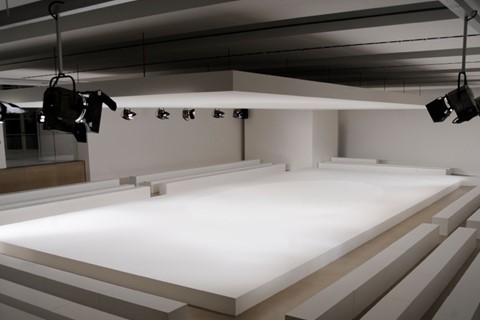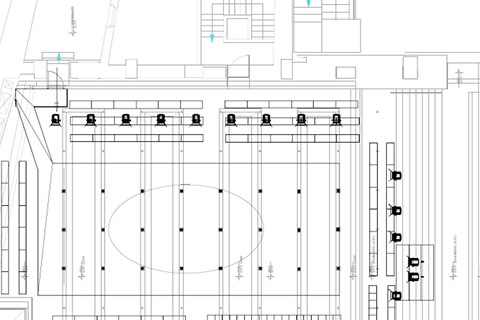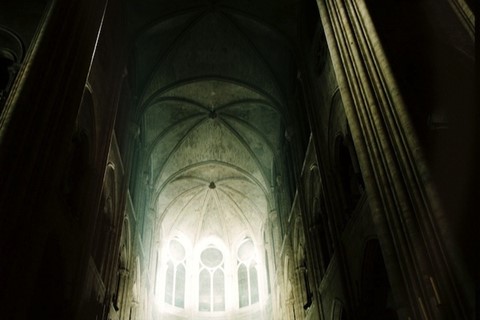Insiders columnist Kin Woo speaks to acclaimed lighting designer Thierry Dreyfus about his work for Jil Sander, Comme des Garçons, Yves Saint Laurent and the Strasbourg Opera...
Amidst the sturm und drang of a S/S13 season that was dominated by the perceived battle between the two new designers at Dior and Saint Laurent; Jil Sander staged a return to her own label after an eight-year absence that proved something of a palette cleanser. Ignoring the fuss completely, she showed a pristine and richly modernist collection that reinforced her standing as a fashion pioneer echoing the show notes of 'Reset to Zero'. And to showcase her purely distilled vision, she couldn’t have picked a better collaborator than the Parisian master of light, Thierry Dreyfus. “When I met Jil, I was struck by the courage of this woman,” says Dreyfus over a glass of red wine at his favourite London hotel. “To come back after eight years and to see her working on every detail. She’s so precise. The idea for the show came about how I see her as a strong woman.”
So Dreyfus constructed a stark white set with a concave, spherical ceiling on suspension and the audience seated around a platform. “I wanted to make an open, breathing box in white. Even if your eyes cannot see it, the angle is perfect.” And echoing one of his heroes, Brancusi, the shape of the set was “all about the perfection of the curve – an oval, feminine shape.” But he’s typically modest about his contribution to the critical success of her comeback show: “The elements are all there but they disappear so that they can emphasise the collection.”
"Light doesn’t have words or speak intellectually... It is about emotion."
Dreyfus honed his skills working for the Strasbourg Opera in the 80s. “You have no money in the theatre so you used to work on the efficiency. In the theatre, you learn to emphasise in a discreet or a baroque way. They should remember the actor or the opera not the set.” His first foray into fashion was creating a dramatic candlelit backdrop for American designer, Patrick Kelly’s 1985 show and since then Dreyfus has been lending his matchless facility with shade, effect and nuance to provide drama for the likes of Calvin Klein, Versace, Marni, Maison Martin Margiela, Dior Homme (under Hedi Slimane), Victoria Beckham and Commes Des Garçons which, unusually for Dreyfus, he has only three days to work on. “But with Rei, you don’t need to explain, the spirit is in the collection.” And it was his longstanding collaboration with his friend Helmut Lang, with whom he worked on every show from his first to his last, that sealed his reputation – his graphic layering of white on white light defining a strong creative direction for the brand. “Light doesn’t have words or speak intellectually. It is reflecting on the girl, the boy, the floor, the back and the set – it has to be a unity. It is about emotion. What you try to express is the way you see the designer.”
He may shy away from calling himself an artist, but his career highlights are many and impressive. He produced Yves Saint Laurent’s 40 year retrospective/farewell show (where, unbeknownst to Saint Laurent, he persuaded Catherine Deneuve to sing), plunged the Notre Dame into darkness only to make it glow from within for Paris’ La Nuit Blanche, placed a beam of light shooting to the Pole Star for Villa Noailles, and majestically illuminated the re-opening of the Grand Palais for 500,000 people. Pressed for his personal favourite though and he opines with a Gallic shrug, “I don’t want to talk about the past. When you’ve done with an installation, it’s done and it’s in the memory of people. My question is, will I be proud of it in five years? I don’t know but my team and I will go to the edge of what we are able to do to be proud of it.”
"When you’ve done with an installation, it’s done and it’s in the memory of people"
Just before the next fashion season, Dreyfus is keeping busy. On the horizon are installations in different cities, a collaboration with the architect, Peter Marino, publication of a book of his own photography and a limited edition range of highly collectible lamps. After nearly 30 years in the industry, Dreyfus is still seeking new ways to engage with his elusive, intangible subject of light. He smiles, “When you have kids, you learn that every day, every moment is important. My favourite project is always the next one.”



